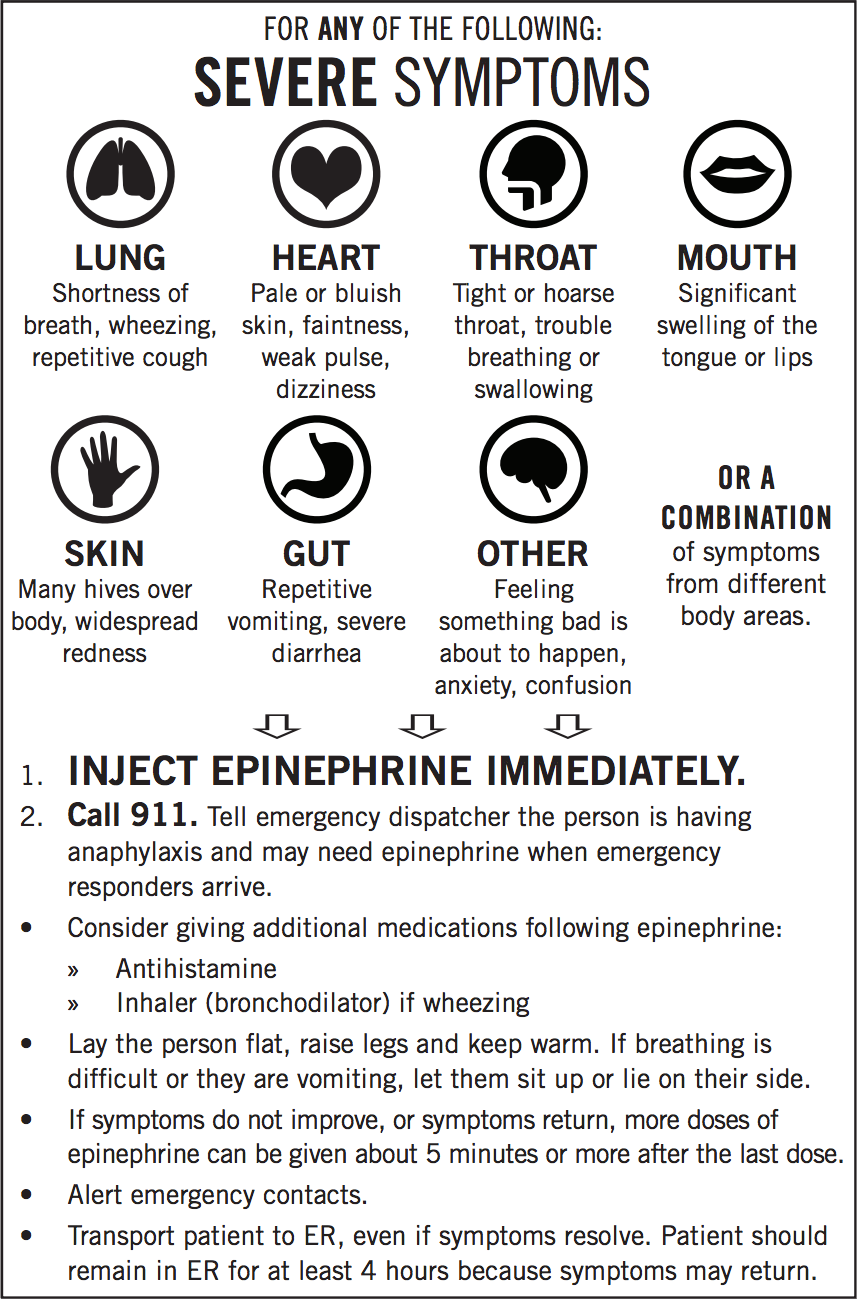Our article yesterday entitled “Epinephrine First, Period” struck a chord with many people who were uncertain when to administer epinephrine when anaphylaxis is suspected.
The article triggered a flurry of questions, the majority of which can be summarized this way: “How do I know whether my child is suffering a mild reaction or full-blown anaphylaxis?”
The answer may depend upon your child’s individual allergies, their history of reactions, whether you suspect they may have ingested one of their allergens and a host of other factors which must be discussed with your child’s doctor.
Given you have had this discussion and your child’s doctor concurs, Food Allergy Research and Education (FARE) has done a wonderful job distilling the decision making process down to a series of symbols and short descriptions that take the guess-work out of determining when to administer epinephrine. These come directly from their Emergency Care Plan which we strongly urge you file with your child’s school, camp, after-school activities, etc.
First, if your child is experiencing ANY of these symptoms, administer epinephrine immediately, call 911, and follow the directions:

If two or more of the following symptoms are present, administer epinephrine, call 911, and follow the steps above:

Remember, mild symptoms can quickly escalate. If your child is experiencing a mild symptom, it’s especially important to stay with them and watch for signs their condition is worsening. If so, don’t wait… administer epinephrine immediately, call 911, and follow the directions above.
According to the American Academy of Pediatrics (AAP), adverse effects of epinephrine in children are rare and prompt administration of epinephrine leads to better outcomes.
Epinephrine First, Period






Is there any way, other than knowing everything a child may have possibly touched and/ or ingested, to know the difference between asthma and the onset of anaphylaxis?
Could this link help? http://www.aafa.org/page/anaphylaxis-severe-allergic-reaction.aspx
I had a doctor try to give my kid oxygen with his first reaction. She then said drive him to the hospital. Yikes. We got epinephrine there. So many errors that day looking back.